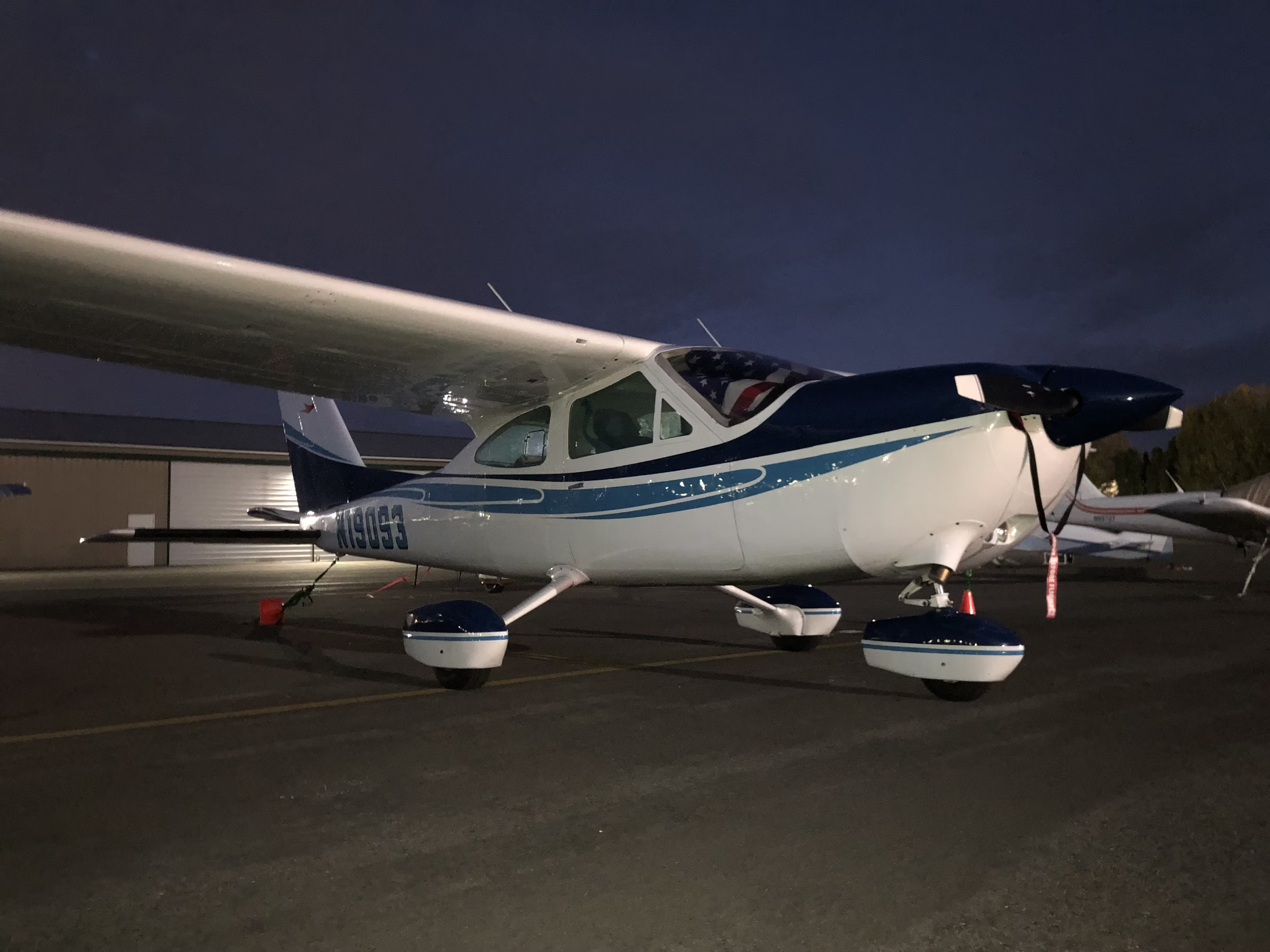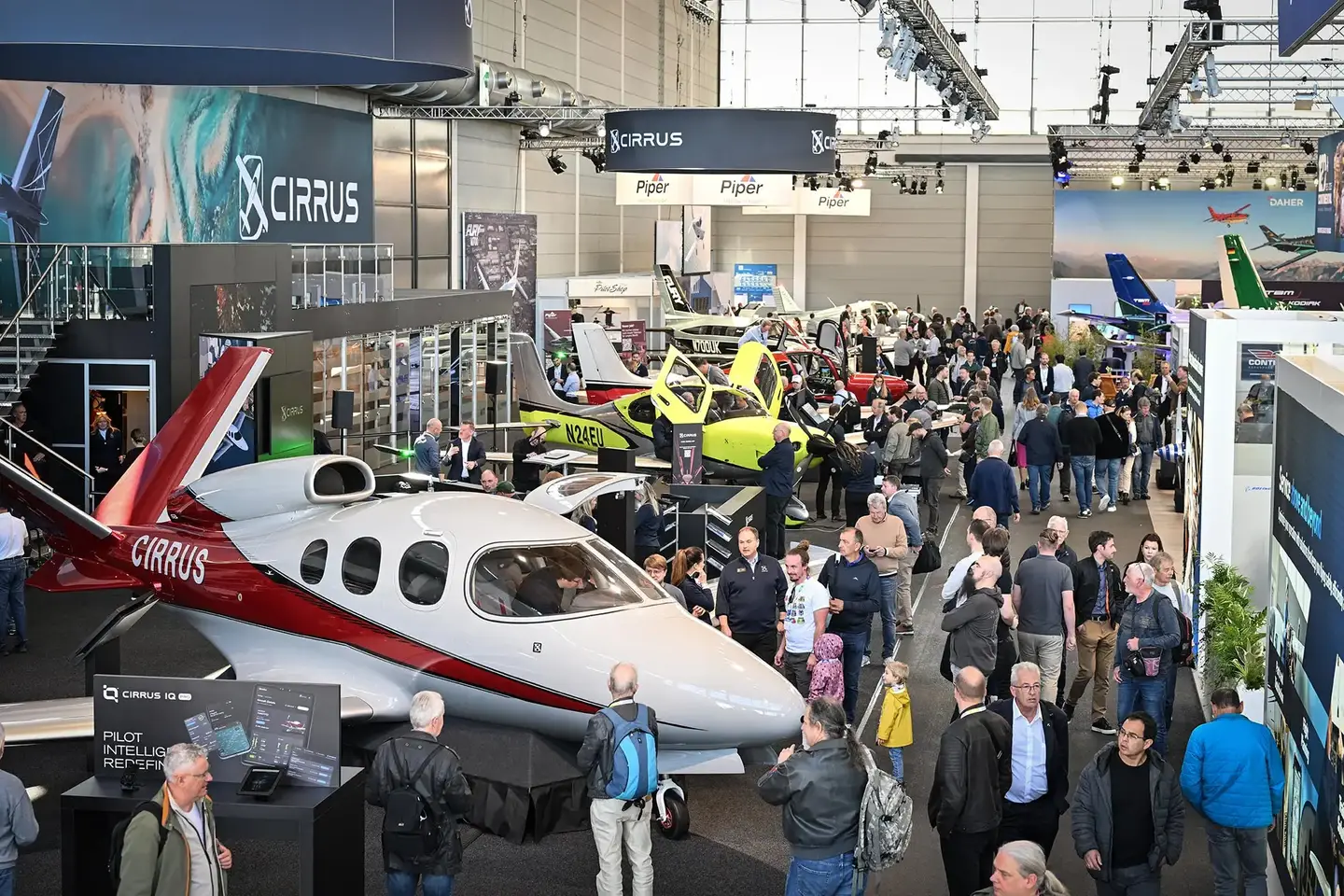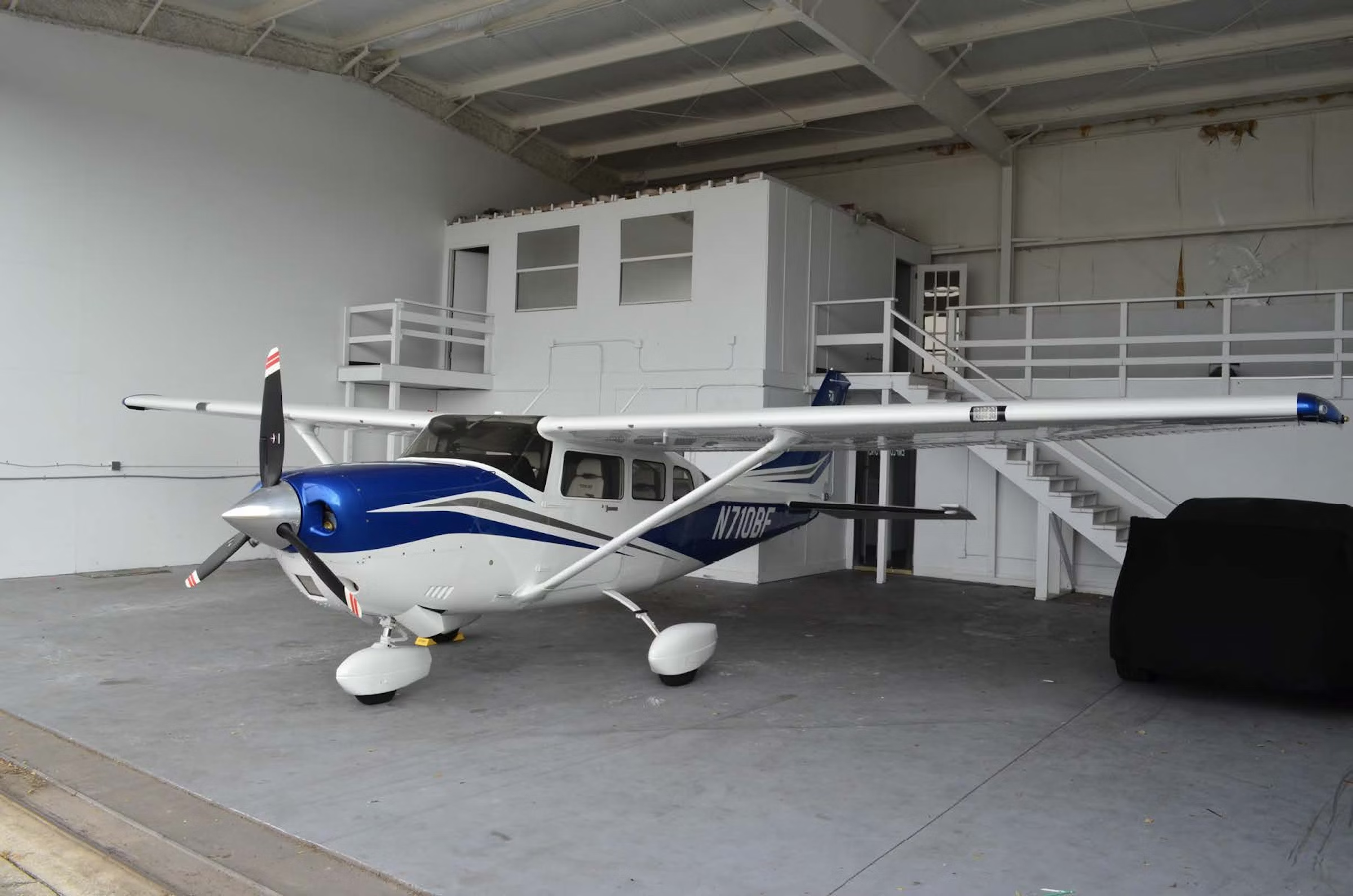
** The Lun’s engines tilted to direct the exhaust
under the wing for takeoff.**
(September 2011) In 1920 it was already common knowledge among pilots that, as airplanes got very close to the ground, they seemed to slide along on a slippery cushion of air. A decade later, the phenomenon — "ground effect" — had been investigated in wind tunnels and flight tests and was well documented, even if the precise mechanisms involved were still imperfectly understood. A 1934 summary of existing research by a French investigator, Maurice Le Sueur, was translated by the National Advisory Committee for Aeronautics, NASA's wonderfully productive and helpful predecessor, and published as Technical Memorandum 771 under the title "Ground Effect on the Takeoff and Landing of Airplanes."
“Observations on airplanes in free flight,” Le Sueur wrote, “have enabled us to observe certain systematic phenomena such as: the greater facility of low-wing airplanes for taking off; the impossibility of certain heavily loaded airplanes to gain altitude; the prolonged gliding power of low-wing airplanes at landing, etc.”
During the 1920s several long-range attempts had ended in disaster when airplanes crammed with fuel rose from the ground, sometimes even after a shorter run than expected, but then would not climb out of ground effect. It still happens today, especially at high density altitudes, but most of us are more likely to encounter ground effect on landing, when we find certain airplanes floating effortlessly past the point where we intended to touch down.
All these phenomena are manifestations of three basic properties of ground effect. The strongest and most readily apparent is the reduction of induced drag, or drag due to lift, which, at minimum speed, is the bulk of any airplane’s drag. Entering ground effect — typically defined as one wingspan above the ground, but really noticeable at less than half a span — has the same effect as increasing the aspect ratio would: The airplane glides better.
The influence of ground effect on lift is less obvious. Contrary to the impression created by the phrase “cushion of air,” ground effect does not increase maximum lift or reduce stalling speed; but lift increases more rapidly with angle of attack in ground effect than out of it, and so the airplane stalls at a lower angle of attack. When the trailing edge of the wing gets quite close to the surface, however, as happens when a short-legged low-wing airplane — a Piper Comanche, for instance — with flaps down flares just above the ground, the maximum lift may in fact diminish and the stalling speed go up.
At speeds well above the stall, dropping closer to the surface increases the lift for a given angle of attack, and so if the angle of attack is held steady, a wing close to the surface — less than a chord length above it — resists getting any closer.
The tendency to maintain a constant height would give rise to an entirely new class of aircraft. In the middle of his long and generally quite technical 1934 report, after completing a discussion of the effects on the ground on takeoff performance, Le Sueur permitted himself this digression:
“Here the imagination of inventors is offered a vast field. The ground interference reduces the power required for level flight in large proportions, so here is a means of rapid and at the same time economic locomotion: Design an airplane which is always within the ground-interference zone.
“At first glance this apparatus is dangerous because the ground is uneven and the altitude called skimming permits no freedom of maneuver. But on large-sized aircraft, over water, the question may be attempted. It is not at all unreasonable to conceive of an aerial steamer — part airplane and part hydroplane — able to sustain itself partly in the air and partly on the water, but requiring for aerodynamic lift 50 percent less power than required, say, for the lift at high altitude.
“We merely make this suggestion,” he added, “without any further statement.”
Others may or may not have been aware of Le Sueur’s modest proposal, but work on surface-skimming aircraft had already begun in Finland. Interest in them seems to have been confined to locations east of the Danube until, in 1967, an American spy satellite photographed what looked like an enormous tandem-wing airplane on the surface of the Caspian Sea. It was about 240 feet long, with an outsize tailplane, a clipped rectangular wing and apparently a canard surface sprouting from the nose. They called it the Caspian Sea Monster. Its nature and purpose remained speculative until the disintegration of the Soviet Union, when Russia opened up to the Western world in hope of turning some of its technologies into badly needed cash.
The Caspian Sea Monster turned out to be only one — and the largest — of a variety of surface skimmers developed under the aegis of a marine engineer, Rostislav Alexeyev, and his design bureau. The best-known of his creations was called Lun (which, birders take note, does not mean “loon” but rather “hen harrier” or “marsh hawk”). Alexeyev, who benefited from the favorable opinion of Soviet premier Nikita Khrushchev, came to surface skimmers through work on hydrofoils — submerged wings that raise a boat’s hull out of the water.
How remarkable a step it was from submerged wings — which can be quite small because water is so much denser than air — to much larger ones skimming along entirely clear of the water is not sufficiently emphasized in accounts of the development of what Alexeyev dubbed “ekranoplani” and what in English are variously termed ekranoplanes, GEVs (ground effect vehicles), WIG (wing in ground effect) ships, or wingships. The phenomena involved are quite different. But Alexeyev made the leap, and also found out how to configure his ekranoplanes to avoid porpoising. His solution was to provide an extremely large horizontal tail high up in a T configuration, so that it was much less influenced by ground effect than the wing was. With very strong longitudinal stability, the craft would maintain its angle of attack and could therefore rely on the favorable interplay of wing height and lift.
When it proved difficult for the vestigial wings of experimental wingships to raise the hulls out of the water at low speed, provision was made for directing the engine exhaust under the wing. Powerplants, whether propellers or pure jets, were consequently mounted near the nose. It was the eight 28,000-pound-thrust engines of the Caspian Sea Monster, mounted in a row just behind the cockpit, that had looked like a canard in early satellite photographs.
Since the military was obviously the market of first resort, the Lun prototype was fitted with six angled missile launchers on its back. The gigantic craft, racing over the water at 250 knots while belching fire and smoke, was impressive in a Hollywood sort of way, but its practical value was debatable. I saw a second Lun-class machine, which was to be outfitted as a fast rescue and hospital ship, under construction at Nizhny Novgorod, east of Moscow, in 1993; it made the Spruce Goose look small. It was never completed. A later, somewhat smaller and quite graceful craft called Orlyonok or Eaglet, equipped with a turboprop engine at the T-tail intersection and wing-blowing turbojets in the nose, looked promising as a transport and possibly as a passenger liner, but it too failed to thrive. I have not seen mention of a wingship aircraft carrier, on which airplanes of any size could settle vertically onto a helipad-like deck, but I’m sure designers must have considered one. They were ready to try anything.
The Russians built small wingships as well, including a two-seat trainer called Strizh (“martlet”), but there was a good reason for their emphasis on gigantic designs. To be economically attractive, high-speed surface skimming required large stretches of open water, and on these the wind could generate waves. To fly comfortably over bumpy water required an aircraft that was much larger than the bumps. Boeing, in fact, once studied a design, called Pelican ULTRA (again the Hollywood flavor), for a 500-foot-span turboprop cargo hauler with a 10,000-mile range and a cargo capacity of 280,000 pounds. It was striking, in part, for its squarish fuselage: Wingships do not need to be pressurized.
Lakes and sheltered inland passages offer smoother surfaces, and in an entirely separate evolutionary branch the German aerodynamicist Alexander Lippisch developed a small, reverse-delta, surface-skimmer configuration. Several efforts, some still ongoing, have been made to commercialize it for recreational craft or ferries; as far as I know none has been built in more than a few examples.
An odd fact about wingships is that they are classed, for administrative purposes, as boats or ships, not airplanes, even though, once they take flight, they are obviously airplanes, not ships. This ought to simplify their introduction into commercial service. For the most part, however, in spite of the “vast field” of possibilities foreseen by Le Sueur in 1934, wingships remain a technology in search of an application.

Sign-up for newsletters & special offers!
Get the latest FLYING stories & special offers delivered directly to your inbox






